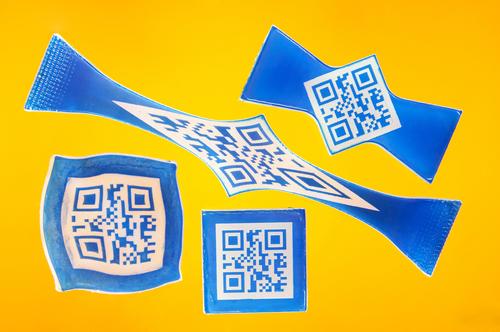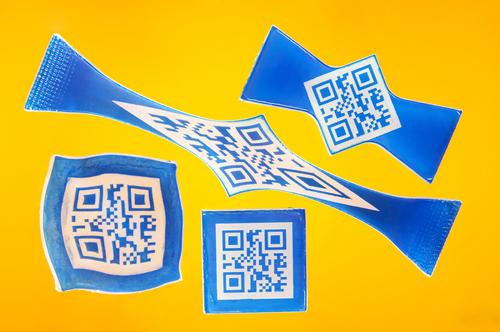August 9, 2012

A new shape-memory plastic that makes quick response (QR) code labels look like Salvador Dali's famous floppy watch could prove useful in product and brand protection. The German Federal Institute for Materials Research and Testing (BAM) has made labels with engraved and colored QR codes out of the new Desmopan DP 2795A SMP, produced by Bayer MaterialScience.
Co-developed by both organizations, the new material is made of a thermoplastic polyurethane (TPU). As is true for all shape-memory plastics, a part made from this one can be temporarily reshaped and fixed in that form, until heated to the material's predetermined switching temperature. When that happens, the part reverts to its original shape nearly unchanged.

The QR codes on the labels made with Desmopan DP 2795A can be read only when the labels are in their permanent, original shape. So the labels can be used to store information that marks and identifies products, making them very difficult to counterfeit. The new material's switching temperature is approximately 40 degrees centigrade (104 degrees F).
Bayer envisions uses ranging from mechanical engineering and aerospace engineering to toy manufacturing and the automotive, textile, and sports and leisure industries, said Juergen Haettig, head of business development for TPU at Bayer MaterialScience, in a press release. For instance, damaged bodywork parts of a car could be repaired with a hair dryer, or the material could be made into remote temperature sensors, artificial muscles, hinges, self-loosening screws, and tubing for packaging.
The new material has all of the typical advantages of a thermoplastic polyurethane, such as good chemical resistance, flexibility, and high abrasion resistance. Because it doesn't contain plasticizers or antihydrolysis agents, it can also be used in food contact applications.
Bayer and BAM have applied for a patent for using Desmopan DP 2795A in an agriculture application. In a field of crops, film tunnels act like greenhouses to accelerate the growth of lettuce and other vegetables, allowing them to be harvested early. But erecting permanent tunnels using films can be costly and time-consuming.
Profiles in the form of a half-tunnel shape are made of the new plastic and temporarily changed to a flat form. They are fastened to the transparent film, which is laid down on the row of crops. When heated to their switching temperature, the profiles revert to their permanent tunnel shape and pop up, bringing the film along with them to form miniature greenhouses.
Related posts:
About the Author(s)
You May Also Like



